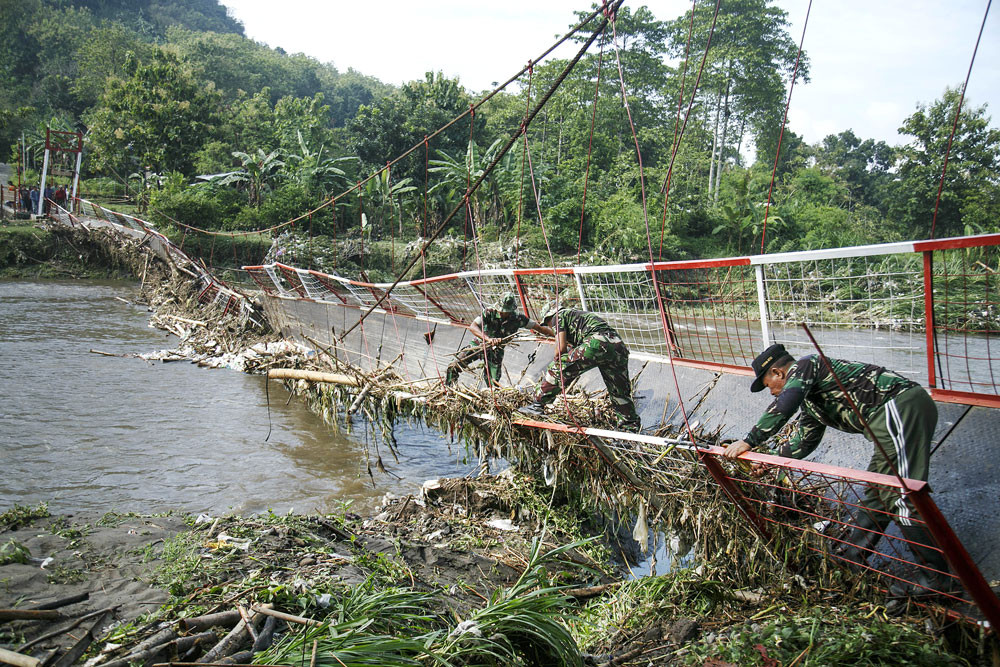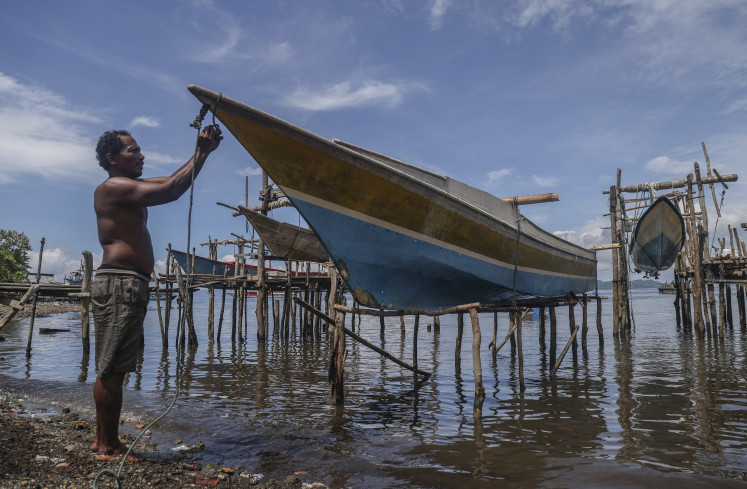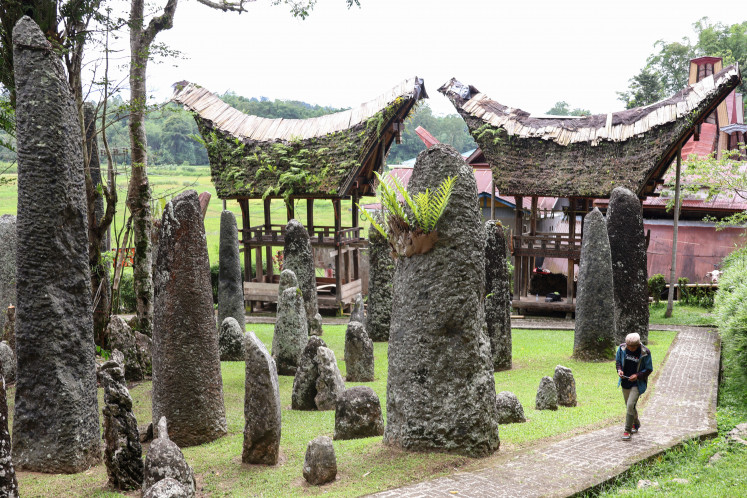Popular Reads
Top Results
Can't find what you're looking for?
View all search resultsPopular Reads
Top Results
Can't find what you're looking for?
View all search resultsIs our social protection system ready for natural disasters?
The National Disaster Mitigation Agency (BNPB) has confirmed that hydrometeorogical disasters would pose serious risks for our country this year. Although Indonesia is known to be prone to natural disasters due to seabed landslides and being located in the “Pacific Ring of Fire”, comprehensive plans and actions to deal with these risks are still lacking.
Change text size
Gift Premium Articles
to Anyone
R
ecently Papua, Yogyakarta and Central Java were hit hard by floods and landslides, killing at least 84 people and affecting over 11,000 families. The National Disaster Mitigation Agency (BNPB) has confirmed that hydrometeorogical disasters would pose serious risks for our country this year. Last year alone, Indonesia was hit extremely hard by volcanic eruptions, earthquake and tsunami apart from a fairly new phenomena, soil liquefaction in Central Sulawesi. Although Indonesia is known to be prone to natural disasters due to seabed landslides and being located in the “Pacific Ring of Fire”, comprehensive plans and actions to deal with these risks are still lacking.
The central and regional governments have been working hard to deliver social protection policies in 2018. However, are we sure enough that we are not missing anything to realize SDGs goal 1 (end poverty), goal 5 (gender equality) and the vision of “Golden Indonesia 2045”?
Among others we have the staple food assistance program (Rastra), one of the most established programs of its kind, to support the poor. The government says Rastra will be fully transformed to non cash food aid to promote accountability, transparency, and effective service delivery. In healthcare, the health card (KIS) and the Indonesian Health Insurance Scheme (BPJS) itself, aims for universal health care, which today is the world’s largest universal health coverage. Under President Joko “Jokowi” Widodo, the government launched the Smart Indonesia Card (KIP), to improve enrolment and attainment rates of the obligatory 12-years school program. The conditional cash transfer program for the poor (PKH), aims to smoothen consumption at the household level in the short run, while attempting to promote better health, education, and nutrition outcomes in the long run particularly among the poor.
The government, regional governments, related agencies and the National Family Planning Agency BKKBN, have also addressed stunting which significantly burdens communities and affect children into adulthood. These policies suggest Indonesia is heading towards the right direction in reducing poverty and investing in human capital.
As Armando Barrientos and David Hulme write in their book, Social Protection for the poor and the poorest, social protection policies are a set of policy instruments to alleviate poverty, while dealing with risks and vulnerability, including disabilities, sickness, normal life cycle (childhood and ageing), and of course, natural disasters.
So far responses towards disasters have been largely residual social protection, through on-request disaster funds and the presidential instruction to develop and implement the curricula on the mitigation and readiness against natural disasters. What else should we do to lift up thousands of people affected by the disasters? Some may fall into poverty, or worse, some might have become even poorer than before the disasters.
Obviously, no single solution can overcome vulnerability and risks, especially considering the uncertainty and complexity of natural disasters. Social risk management, a framework first introduced by experts in 2000, shed light to approach this issue through policies related to disaster: ex-ante (prevention and mitigation) and ex-post (coping strategies) disasters. Some examples of ex-ante policies are policies in health, education, technology adoptions, investment in social and hard infrastructure, migration, and labor policies, which aim for sustainable and resilient communities.
The ASEAN Regional Mechanism on Disaster Management has provided a framework that links economic and labor policies with national disaster mitigation strategies. Scandinavian countries use tax and redistribution, through health and education policies to cope with risks, including natural disaster and climate-related risks.
Ex-ante policies are important to mitigate, reduce the likelihood, and minimize the catastrophic consequences of natural disasters, and we should start to re-think what type of ex-ante approach would suit best with Indonesian’s socioeconomic, political, and cultural contexts.
Now let’s look at ex-post policies, which other than “emergency disaster relief funds” still rely on informal and community-based short-term solutions, such as donations, crowdfunding, and voluntarism. Examples include the National Disaster Management in Bangladesh and Ethiopia’s Productive Safety Net Program to let communities resume their livelihoods, while providing job skill training, or measures to resume classrooms in Haiti while reconnecting social relationships after Hurricane Matthew.
Whatever policies are decided, they should respond to the community’s needs and priorities, while protecting their dignity.
***
The writer is a research officer at Crawford School of Public Policy, at the Australian National University. Her interests are on the areas of social development issues and gender equality.










